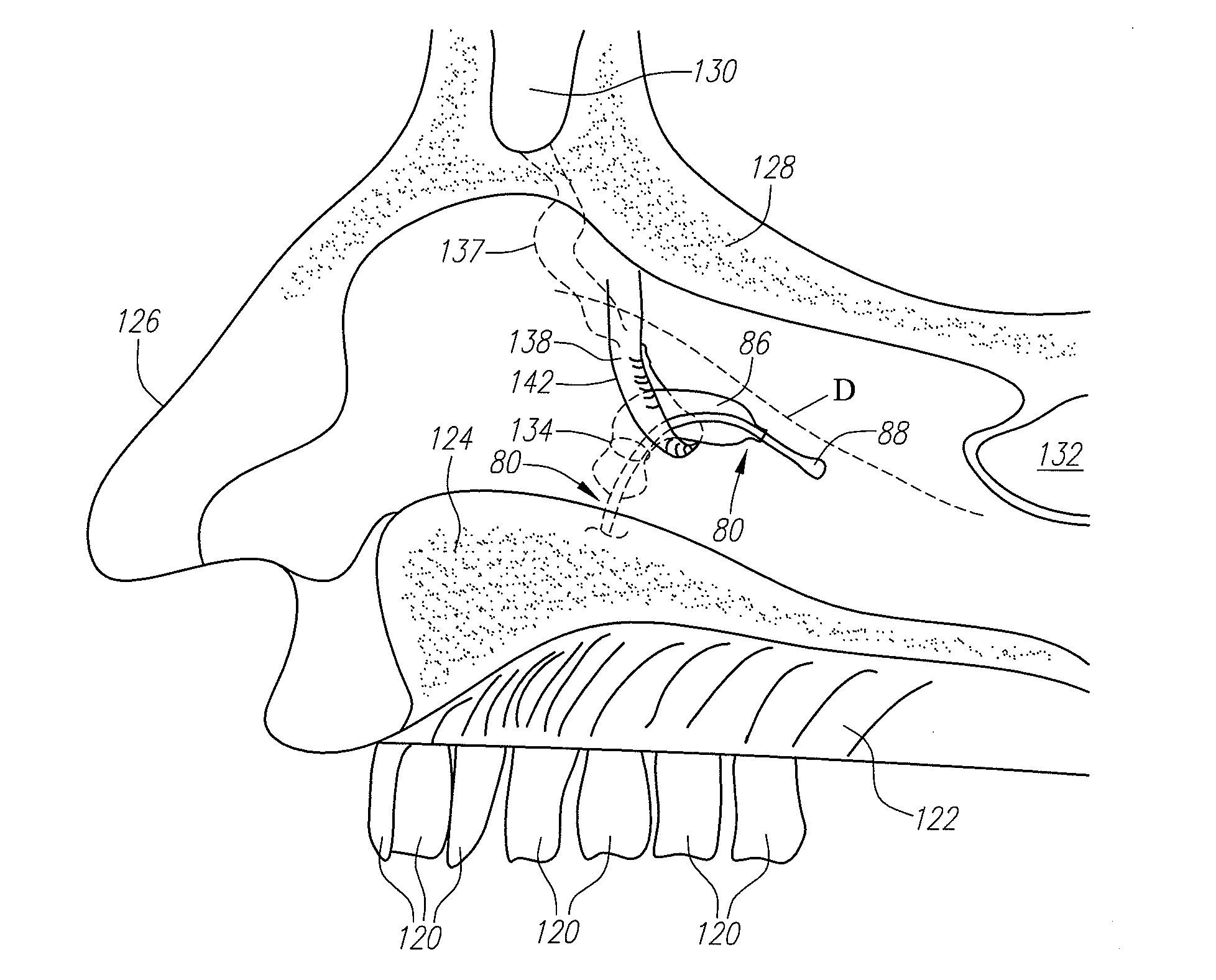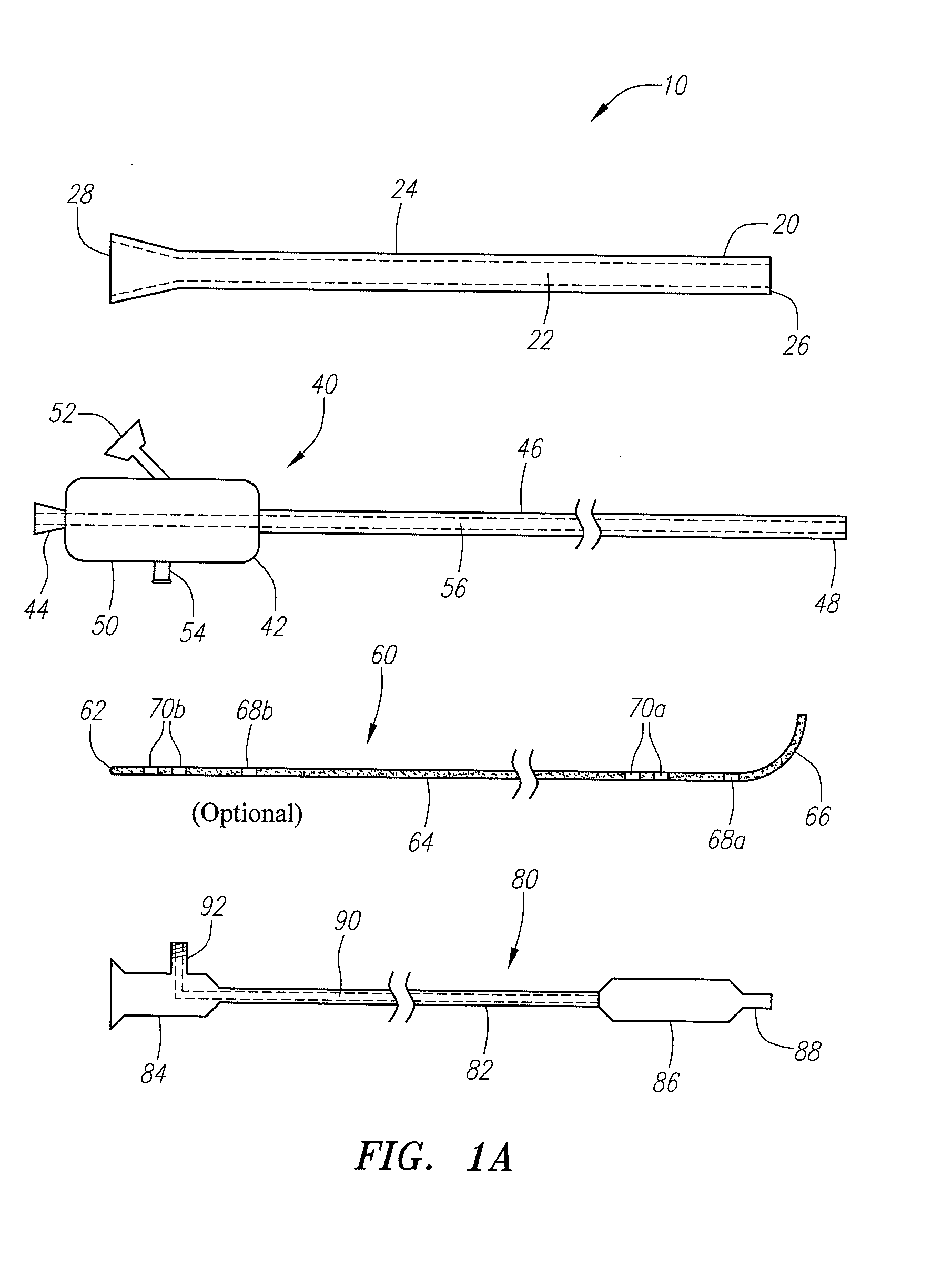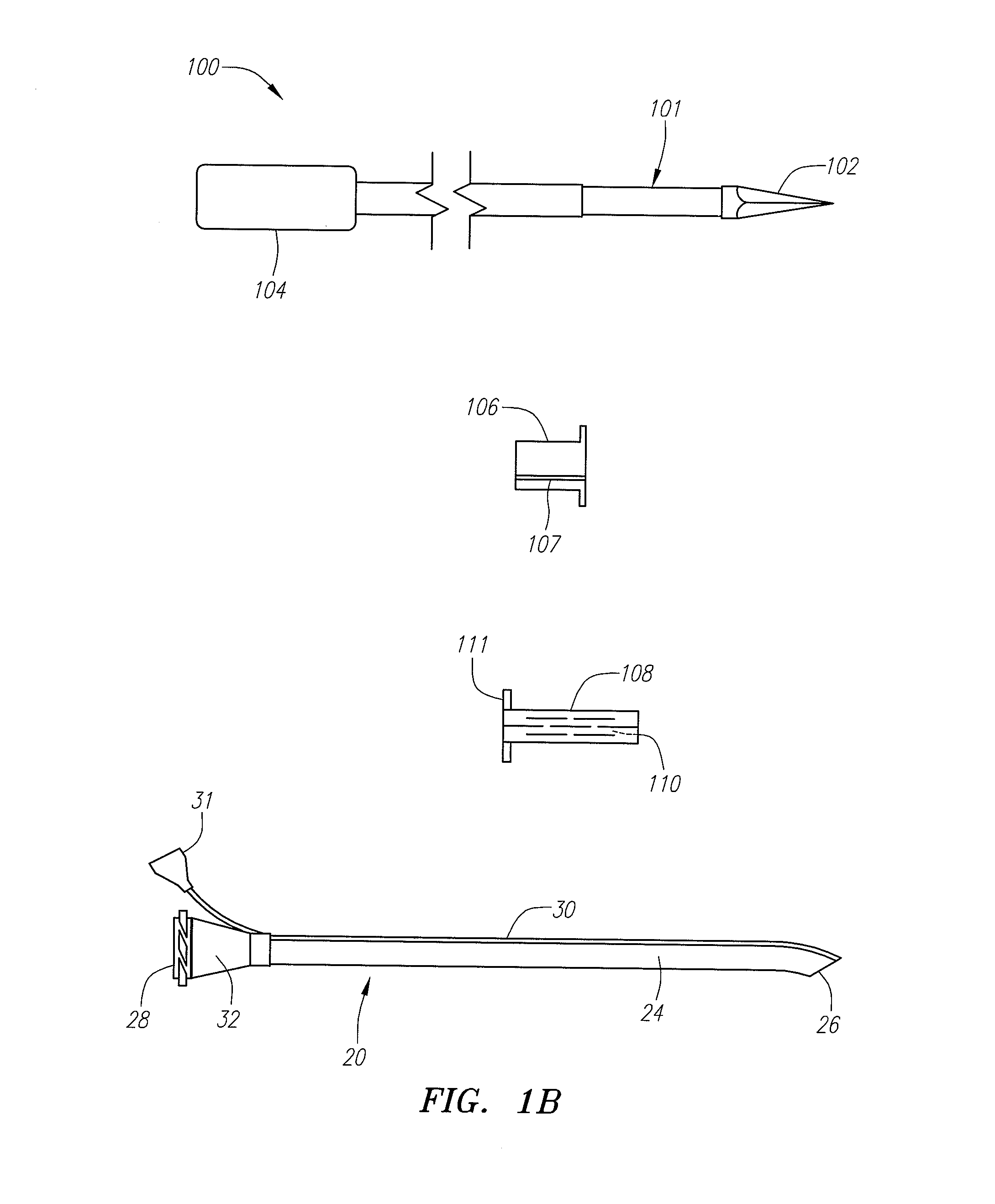Apparatus and method for treatment of sinusitis
- Summary
- Abstract
- Description
- Claims
- Application Information
AI Technical Summary
Benefits of technology
Problems solved by technology
Method used
Image
Examples
Embodiment Construction
[0088]FIG. 1A illustrates an apparatus 10 for the treatment of sinusitis according to one embodiment. The apparatus 10 may include a number of sub-components as is shown in FIGS. 1A and 1B. In this regard, the apparatus 10 may be sold or offered as a kit or the like that includes all the necessary sub-components necessary to form the complete apparatus or system 10. However, in an alternative aspect of the invention, the apparatus 10 may be sold or offered with fewer than all the sub-components illustrated in FIGS. 1A and 1B. For example, the guide wire or endoscope may, in some instances, be off-the-shelf components existing at the physician's office or hospital that can be utilized with the remaining sub-components of the apparatus 10. In still other instances, the complete apparatus 10 does not need certain sub-components to operate. For example, as explained herein, in certain aspects of the invention, there is not need for a separate guide wire.
[0089]As seen in FIG. 1A, the app...
PUM
 Login to View More
Login to View More Abstract
Description
Claims
Application Information
 Login to View More
Login to View More - R&D
- Intellectual Property
- Life Sciences
- Materials
- Tech Scout
- Unparalleled Data Quality
- Higher Quality Content
- 60% Fewer Hallucinations
Browse by: Latest US Patents, China's latest patents, Technical Efficacy Thesaurus, Application Domain, Technology Topic, Popular Technical Reports.
© 2025 PatSnap. All rights reserved.Legal|Privacy policy|Modern Slavery Act Transparency Statement|Sitemap|About US| Contact US: help@patsnap.com



